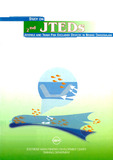| dc.identifier.citation | Chokesanguan, B., Ananpongsuk, S., Chanrachkij, I., Yingyuad, W., & Suru, B. B. (2005). Study on juvenile and trash excluder devices (JTEDs) in Brunei Darussalam (2nd Ed.). Samut Prakan, Thailand: Training Department, Southeast Asian Fisheries Development Center. | en |
| dc.description.abstract | The SEAFDEC Training Department, in cooperation with the Department of Fisheries, Brunei Darussalam, conducted the second series of experiments on Juvenile and Trash Excluder Devices in Brunei Darussalam. The objective being to study the catching and release efficiency for juvenile and trash fishes using different escape openings of the JTEDs. The rigid sorting grid with a bar space of 1, 2 and 3cm were operated at 6 stations in daytime, 4 stations at night and at 2 special stations for the rigid sorting grid with a bar space 1 cm for sea trials. The rectangular shaped JTEDs and semi-curved d JTEDs were operated at 6 stations at night only. There were a total of 44 operations.
The CPUEs of the fish trawl net, operated in the northern areas of Brunei Darussalam were 283.27 kg/hr, about 54% in daytime and 46% at night. Escape rate percentages, by weight, of the trawl net with the rigid sorting grid JTEDs attached and having a bar space of 1, 2, 3cm, the rectangular shaped JTEDs and semi-curved JTEDs were 30.38, 77.67, 86.29, 40.03 and 12.77%, respectively. However there were some large fishes that could escape from the rigid sorting grid JTEDs with bar spacing of 2 and 3 cm of both the rectangular shaped JTEDs and semi-curved d JTEDs. The estimated selectivity curves were shown the sizes of Leiognathus ssp., which escaped from the rigid sorting grid JTEDs with bar spacing of 1, 2, 3cm in both the rectangular shaped JTEDs and semi-curved d JTEDs at L50, were 10.30, 13.29, 14.22, 4.28 and 9.16, respectively. The estimate selectivity curves were shown the sizes of Gerres ssp., which escaped from the rigid sorting grid JTEDs with bar spacing of 1, 2, 3cm of both the rectangular shaped JTEDs and semi-curved d JTEDs at L50, were 11.77, 13.40, 12.90, 11.91 and 10.01, respectively. | en |

